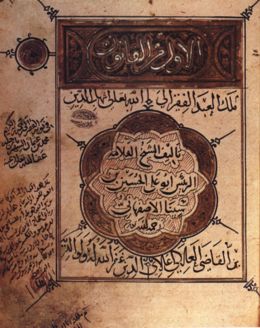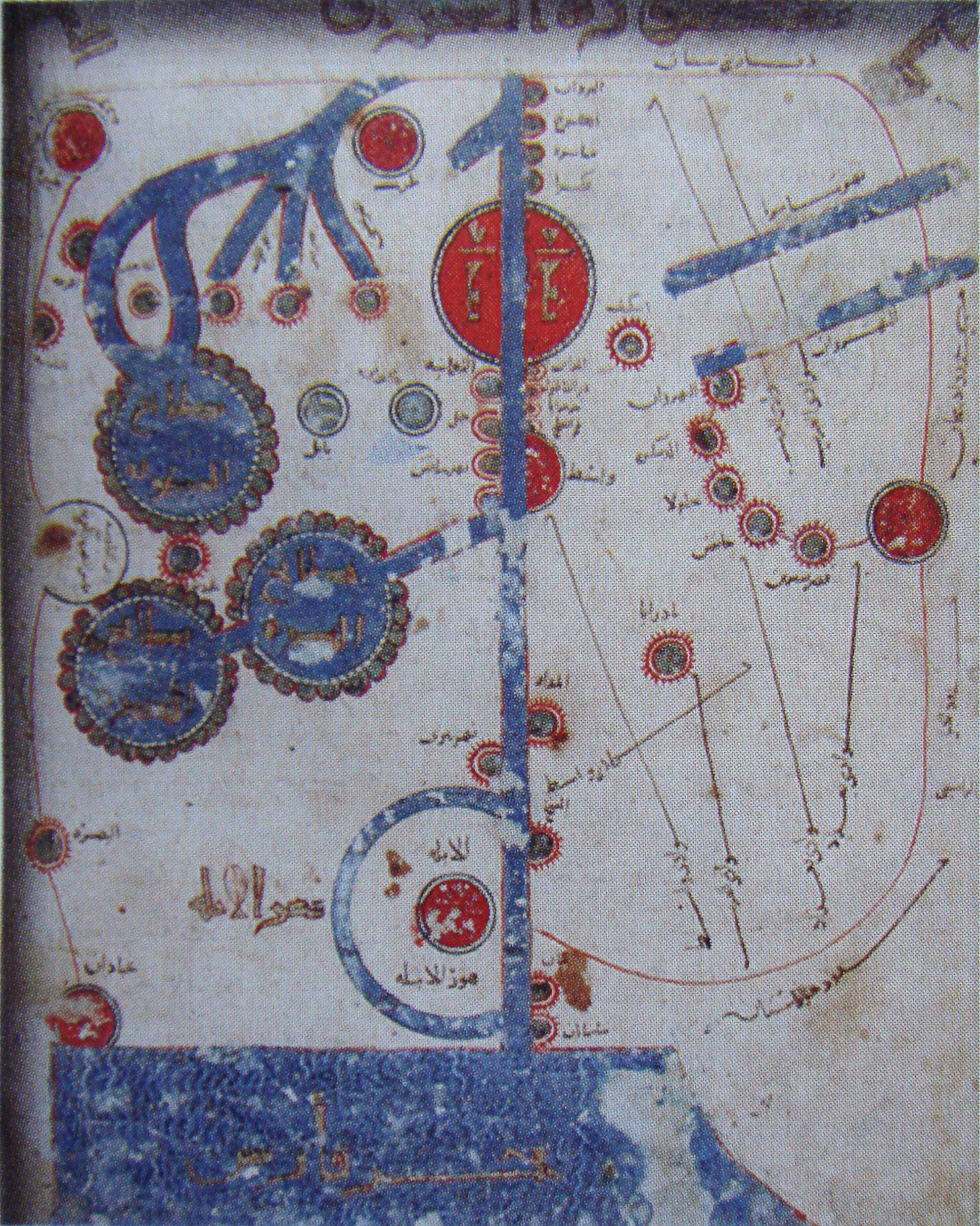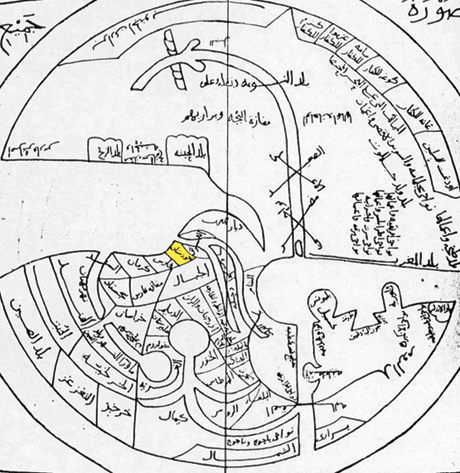|
Old Azeri
Old Azeri (also spelled Adhari, Azeri or Azari) is the extinct Iranian language that was once spoken in the northwestern Iranian historic region of Azerbaijan (Iranian Azerbaijan) before the Turkification of the region. Some linguists believe the southern Tati varieties of Iranian Azerbaijan around Takestan such as the Harzandi and Karingani dialects to be remnants of Old Azeri. In addition, Old Azeri is known to have strong affinities with Talysh. Old Azeri was the dominant language in Azerbaijan before it was replaced by Azerbaijani, which is a Turkic language. Initial studies Ahmad Kasravi, a predominant Iranian Azeri scholar and linguist, was the first scholar who examined the Iranian language of Iran's historic Azerbaijan region. He conducted comprehensive research using Arabic, Persian, Turkish and Greek historical sources and concluded that Old Azeri was the language of this region of Iran before adopting the Turkic language of the same name. Historical research s ... [...More Info...] [...Related Items...] OR: [Wikipedia] [Google] [Baidu] |
Iran
Iran, officially the Islamic Republic of Iran, and also called Persia, is a country located in Western Asia. It is bordered by Iraq and Turkey to the west, by Azerbaijan and Armenia to the northwest, by the Caspian Sea and Turkmenistan to the north, by Afghanistan and Pakistan to the east, and by the Gulf of Oman and the Persian Gulf to the south. It covers an area of , making it the 17th-largest country. Iran has a population of 86 million, making it the 17th-most populous country in the world, and the second-largest in the Middle East. Its largest cities, in descending order, are the capital Tehran, Mashhad, Isfahan, Karaj, Shiraz, and Tabriz. The country is home to one of the world's oldest civilizations, beginning with the formation of the Elamite kingdoms in the fourth millennium BC. It was first unified by the Medes, an ancient Iranian people, in the seventh century BC, and reached its territorial height in the sixth century BC, when Cyrus the Great f ... [...More Info...] [...Related Items...] OR: [Wikipedia] [Google] [Baidu] |
Seljuq Turks
The Seljuk dynasty, or Seljukids ( ; fa, سلجوقیان ''Saljuqian'', alternatively spelled as Seljuqs or Saljuqs), also known as Seljuk Turks, Seljuk Turkomans "The defeat in August 1071 of the Byzantine emperor Romanos Diogenes by the Turkomans at the battle of Malazgirt (Manzikert) is taken as a turning point in the history of Anatolia and the Byzantine Empire. or the Saljuqids, was an Oghuz Turkic, Sunni Muslim dynasty that gradually became Persianate and contributed to the Turco-Persian tradition in the medieval Middle East and Central Asia. The Seljuks established the Seljuk Empire (1037-1194), the Sultanate of Kermân (1041-1186) and the Sultanate of Rum (1074-1308), which at their heights stretched from Iran to Anatolia, and were the prime targets of the First Crusade. Early history The Seljuks originated from the Kinik branch of the Oghuz Turks, who in the 8th century lived on the periphery of the Muslim world, north of the Caspian Sea and Aral Sea in their Oghuz ... [...More Info...] [...Related Items...] OR: [Wikipedia] [Google] [Baidu] |
Ya'qubi
ʾAbū l-ʿAbbās ʾAḥmad bin ʾAbī Yaʿqūb bin Ǧaʿfar bin Wahb bin Waḍīḥ al-Yaʿqūbī (died 897/8), commonly referred to simply by his nisba al-Yaʿqūbī, was an Arab Muslim geographer and perhaps the first historian of world culture in the Abbasid Caliphate. Life He was born in Baghdad as the great-grandson of Wadih, the freedman of the caliph Al-Mansur. Until 873 he lived in Armenia and Khorasan, working under the patronage of the Tahirids Governors; then he traveled to India, Egypt and the Maghreb, and died in Egypt. He died in AH 284 (897/8). His sympathies with Ahl al-Bayt are found throughout his works. In 872, he lists the kingdoms of Bilād as-Sūdān, including Ghana, Gao, and Kanem. Works * '' Ta'rikh ibn Wadih'' (''Chronicle of Ibn Wadih'') * '' Kitab al-Buldan'' (''Book of the Countries'') - biology, contains a description of the Maghreb The Maghreb (; ar, الْمَغْرِب, al-Maghrib, lit=the west), also known as the Arab Mag ... [...More Info...] [...Related Items...] OR: [Wikipedia] [Google] [Baidu] |
Al-Muqaddasi
Shams al-Dīn Abū ʿAbd Allāh Muḥammad ibn Aḥmad ibn Abī Bakr al-Maqdisī ( ar, شَمْس ٱلدِّيْن أَبُو عَبْد ٱلله مُحَمَّد ابْن أَحْمَد ابْن أَبِي بَكْر ٱلْمَقْدِسِي), better known as al-Maqdisī ( ar, links=no, ٱلْمَقْدِسِي) or al-Muqaddasī ( ar, links=no, ٱلْمُقَدَّسِي), ( – 991) was a medieval Arab geographer, author of ''Aḥsan al-taqāsīm fī maʿrifat al-aqālīm'' (''The Best Divisions in the Knowledge of the Regions''), as well as author of the book, ''Description of Syria (Including Palestine)''. He is one of the earliest known historical figures to self-identify as a Palestinians, Palestinian during his travels. Biography Sources Outside of his own work, there is little biographical information available about al-Maqdisi.Miquel 1993, p. 492. He is neither found in the voluminous biographies of Ibn Khallikan (d. 1282) nor were the aspects of his life mentioned in th ... [...More Info...] [...Related Items...] OR: [Wikipedia] [Google] [Baidu] |
Hamza Al-Isfahani
Hamza ibn al-Hasan bnal-Mu'addib al-Isfahani ( ar, حمزه الاصفهانی; – after 961), commonly known as Hamza al-Isfahani (or Hamza Isfahani; ) was a Persian philologist and historian, who wrote in Arabic during the Buyid era. A Persian nationalist with strong prejudices against Arabs, he spent most of his life in his native town, Isfahan, and visited Baghdad three times during his lifetime. He had contact with many important scholars and historians, among them al-Tabari and Ibn Durayd. He wrote a history of Isfahan, a famous Chronology of pre-Islamic and Islamic dynasties known as ''Taʾrīk̲h̲ sinī mulūk al-arḍ wa ’l-anbiyāʾ'' (), and some other works on lexicography and poetry. Biography Like many other medieval Iranian scholars, details regarding the life of Hamza are obscure. He was born in the city of Isfahan in , where he spent most of his life. The city had served as an important center in western Iran under the Achaemenid, Parthian and Sasanian ... [...More Info...] [...Related Items...] OR: [Wikipedia] [Google] [Baidu] |
Ibn Al-Nadim
Abū al-Faraj Muḥammad ibn Isḥāq al-Nadīm ( ar, ابو الفرج محمد بن إسحاق النديم), also ibn Abī Ya'qūb Isḥāq ibn Muḥammad ibn Isḥāq al-Warrāq, and commonly known by the ''nasab'' (patronymic) Ibn al-Nadīm ( ar, ابن النديم; died 17 September 995 or 998) was an Arab Muslim bibliographer and biographer of Baghdad who compiled the encyclopedia ''Kitāb al-Fihrist'' (''The Book Catalogue''). Biography Much known of al-Nadim is deduced from his epithets. 'Al-Nadim' (), 'the Court Companion' and 'al-Warrāq () 'the copyist of manuscripts'. Probably born in Baghdad ca. 320/932 he died there on Wednesday, 20th of Shaʿban A.H. 385. He was a Persian or perhaps an Arab. From age six, he may have attended a ''madrasa'' and received comprehensive education in Islamic studies, history, geography, comparative religion, the sciences, grammar, rhetoric and Qurʾanic commentary. Ibrahim al-Abyari, author of ''Turāth al-Insaniyah'' says al-Nadim ... [...More Info...] [...Related Items...] OR: [Wikipedia] [Google] [Baidu] |
Estakhri
Abu Ishaq Ibrahim ibn Muhammad al-Farisi al-Istakhri () (also ''Estakhri'', fa, استخری, i.e. from the Iranian city of Istakhr, b. - d. 346 AH/AD 957) was a 10th-century travel-author and geographer who wrote valuable accounts in Arabic of the many Muslim territories he visited during the Abbasid era of the Islamic Golden Age. There is no consensus regarding his origin. Some sources describe him as Persian, while others state he was Arab. IV:222b-223b. The ''Encyclopedia Iranica'' states: "Biographical data are very meager. From his ''nesbas'' (attributive names) he appears to have been a native of Eṣṭaḵr in Fārs, but it is not known whether he was Persian". VIII(6):646-647 (I have used the updated online version). Istakhri's account of windmills is the earliest known. Istakhri met the celebrated traveller-geographer Ibn Hawqal, while travelling, and Ibn Hawqal incorporated the work of Istakhri in his book ''Kitab al-Surat al-Ard''. Works Istakhri's two surviv ... [...More Info...] [...Related Items...] OR: [Wikipedia] [Google] [Baidu] |
Yaqut Al-Hamawi
Yāqūt Shihāb al-Dīn ibn-ʿAbdullāh al-Rūmī al-Ḥamawī (1179–1229) ( ar, ياقوت الحموي الرومي) was a Muslim scholar of Byzantine Greek ancestry active during the late Abbasid period (12th-13th centuries). He is known for his , an influential work on geography containing valuable information pertaining to biography, history and literature as well as geography. Life ''Yāqūt'' (''ruby'' or '' hyacinth'') was the '' kunya'' of Ibn Abdullāh ("son of Abdullāh"). He was born in Constantinople, and as his '' nisba'' "al-Rumi" ("from Rūm") indicates he had Byzantine Greek ancestry. Yāqūt was "mawali" to ‘Askar ibn Abī Naṣr al-Ḥamawī, a trader of Baghdad, Iraq, the seat of the Abbasid Caliphate, from whom he received the '' laqab'' "Al-Hamawī". As ‘Askar's apprentice, he learned about accounting and commerce, becoming his envoy on trade missions and travelling twice or three times to Kish in the Persian Gulf. In 1194 ‘Askar stopped his salar ... [...More Info...] [...Related Items...] OR: [Wikipedia] [Google] [Baidu] |
Ibn Hawqal
Muḥammad Abū’l-Qāsim Ibn Ḥawqal (), also known as Abū al-Qāsim b. ʻAlī Ibn Ḥawqal al-Naṣībī, born in Nisibis, Upper Mesopotamia; was a 10th-century Arab Muslim writer, geographer, and chronicler who travelled during the years 943 to 969 AD. Ludwig W. Adamec (2009), ''Historical Dictionary of Islam'', p.137. Scarecrow Press. . His famous work, written in 977 AD, is called (; "The face of the Earth"). The date of his death, known from his writings, was after 368 AH/978 AD. Biography Details known of Ibn Hawqal's life are extrapolated from his book. He spent the last 30 years of his life traveling to remote parts of Asia and Africa and writing about what he saw. One journey brought him 20° south of the equator along the East African coast where he discovered large populations in regions the ancient Greek writers had deemed, from logic rather than knowledge, were uninhabitable. Ṣūrat al-’Arḍ Ibn Hawqal based his great work of geography on a revision ... [...More Info...] [...Related Items...] OR: [Wikipedia] [Google] [Baidu] |
Al-Masudi
Al-Mas'udi ( ar, أَبُو ٱلْحَسَن عَلِيّ ٱبْن ٱلْحُسَيْن ٱبْن عَلِيّ ٱلْمَسْعُودِيّ, '; –956) was an Arab historian, geographer and traveler. He is sometimes referred to as the "Herodotus of the Arabs". A polymath and prolific author of over twenty works on theology, history (Islamic and universal), geography, natural science and philosophy, his celebrated magnum opus '' Murūj al-Dhahab wa-Ma'ādin al-Jawhar'' ( ar, مُرُوج ٱلذَّهَب وَمَعَادِن ٱلْجَوْهَر, link=no), combines universal history with scientific geography, social commentary and biography, and is published in English in a multi-volume series as '' The Meadows of Gold and Mines of Gems''. Birth, travels and literary output Apart from what Al-Mas'udi writes of himself little is known. Born in Baghdad, he was descended from Abdullah Ibn Mas'ud, a companion of Muhammad. He mentions many scholar associates met on his travels t ... [...More Info...] [...Related Items...] OR: [Wikipedia] [Google] [Baidu] |
Al-Baladhuri
ʾAḥmad ibn Yaḥyā ibn Jābir al-Balādhurī ( ar, أحمد بن يحيى بن جابر البلاذري) was a 9th-century Muslim historian. One of the eminent Middle Eastern historians of his age, he spent most of his life in Baghdad and enjoyed great influence at the court of the caliph al-Mutawakkil. He travelled in Syria and Iraq, compiling information for his major works. His full name was Ahmad Bin Yahya Bin Jabir Al-Baladhuri ( ar, أحمد بن يحيى بن جابر البلاذري), Balazry Ahmad Bin Yahya Bin Jabir Abul Hasan or Abi al-Hassan Baladhuri. Biography Al-Baladhuri's ethnicity has been described as Arab and Persian, although his sympathies seem to have been strongly with the Arabs, for Masudi refers to one of his works in which he rejects Baladhuri's condemnation of non-Arab nationalism Shu'ubiyya. He lived at the court of the caliphs al-Mutawakkil and Al-Musta'in and was tutor to the son of al-Mutazz. He died in 892 as the result of a drug cal ... [...More Info...] [...Related Items...] OR: [Wikipedia] [Google] [Baidu] |
Igrar Aliyev
Igrar Habib oglu Aliyev ( az, İqrar Əliyev) (14 March 1924, Baku – 11 June 2004, Baku) was a Soviet and Azerbaijani historian. Aliyev was the author of 160 peer reviewed journal publications and books. Many of his books are devoted to the Medes and Median Empire. Among his writings are: "The History Of Media"(Baku, 1960), "A Historical Survey of Atropatena" (Baku, 1989), "History of Azerbaijan (Baku, 1993, and in Russian, 1995). "Nagorno Karabakh: History, Facts and Events", No. 22-34 (Baku: Elm, 1982), "On Problems Related to the Ethnic History of the Azerbaijani People" (Baku: Nurlan, 2002), "The History of Aturpatakan" (also translated into Persian, published in Iran in 1999). Aliyev was a director of the Institute of History of the National Academy of Sciences of Azerbaijan. He followed the methodology of the world-famous Soviet academician V. V. Struve, who was a leading specialist in the field of ancient Oriental studies. Aliyev knew ancient dead languages including Su ... [...More Info...] [...Related Items...] OR: [Wikipedia] [Google] [Baidu] |

.jpg)


